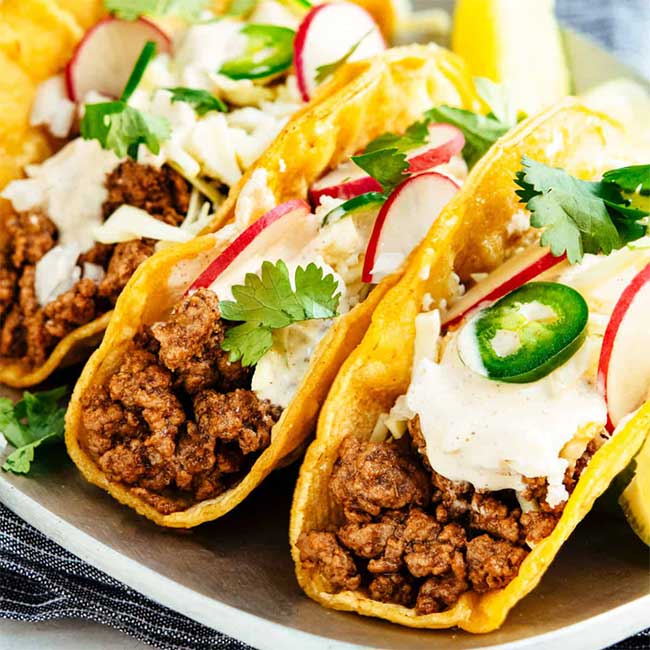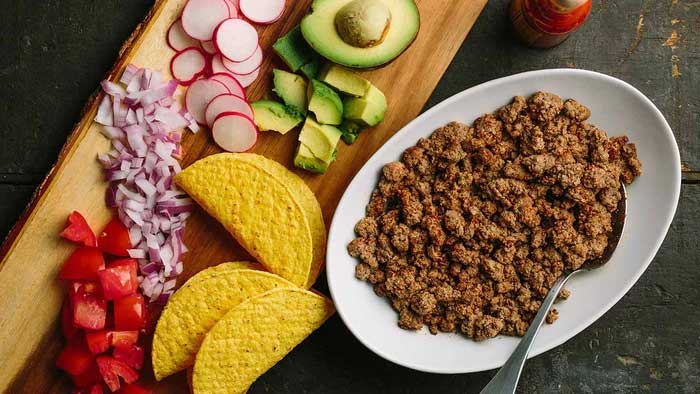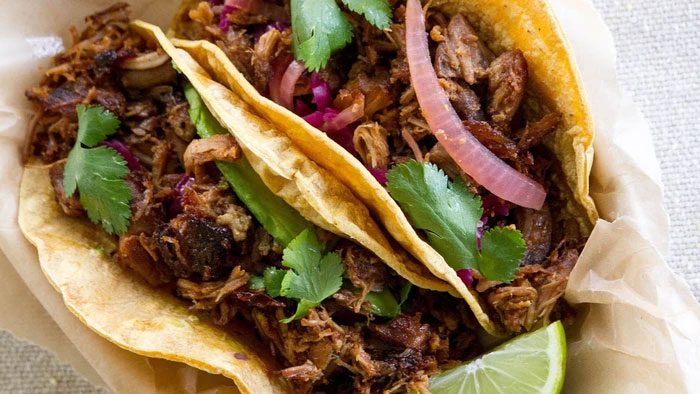Taco is one of the most famous dishes found almost everywhere around the world. Not only is it served in restaurants, but there are also numerous recipes available, allowing people to create this delicious dish quickly and easily at home.
So, how did the Taco evolve from a laborer’s meal into a distinctive dish present on the menus of American restaurants? It is a story of innovation by indigenous people in central areas of the Americas, the influence of Spain and North Africa on Mexican cuisine, as well as the continuous integration and competition between traditional Mexican cooking methods and American fast food culture.

The origin of modern Taco can be traced back to various indigenous groups.
The Origin of Taco
According to Jeffrey M. Pilcher, a history professor at the University of Minnesota, the origin of the modern Taco can be traced back to various indigenous groups that built civilizations in Mexico thousands of years ago.
Specifically, they developed a process still commonly used today called nixtamalization. This is a process that uses a warm alkaline solution to chemically alter corn kernels, making them tastier and more nutritious.
Explaining this, Pilcher states: “People have been eating corn tortillas with meat or beans wrapped for over a millennium.” The professor believes that Taco originated from the snacking habits of silver miners in Mexico.
According to Taco Planet, the term Taco was used to refer to a snack in Spanish before it became associated with the famous tortilla dish in Mexico. At one time, “taco” was slang for gunpowder wrapped in paper, frequently used by miners outside the town of Pachuca.
Coincidentally, these Mexican miners also used the term Taco for their rolled tortilla dish. After mining activities ceased, they brought this version of the dish to the streets of Mexico and later to the Southwestern United States.

Mexican Americans living on the border have created many different versions of Taco.
Fast Food Taco Versions
Taco exemplifies Mexican culinary culture in several ways:
- First, this dish contains a variety of different foods inside, reflecting the diversity of culinary traditions across different regions in Mexico.
- Second, Taco represents a stable boundary between cultural appropriation and appreciation when it comes to food.
Mexican Americans living on the border have created many different versions of Taco influenced by the blending of cultures along the U.S.-Mexico border. Each region has its own unique variations of Taco.
In the 1960s in California, hot dog vendor Glenn Bell realized he could change the cooking method to speed up the preparation of a Taco. Just like McDonald’s hamburgers could be made quickly, so could Tacos.
By using a crispy corn shell instead of the traditional soft tortilla, Glenn Bell transformed Mexican culinary tradition into a staple of American cuisine, and thus Taco Bell’s fame spread worldwide.
The Competition Between Traditional and New Taco Versions
It is not hard to imagine why there has been a fierce backlash against Glenn Bell’s crispy Taco version. Many see it as a prime example of cultural appropriation in food.
Today, traditional Mexican Tacos are popular everywhere, from upscale restaurants to street vendors with food carts. Not to mention the homemade Tacos prepared with various creative recipes.

Today, traditional Mexican Tacos are popular everywhere.
In his book on Tacos, Jeffrey Pilcher took a trip to Hermosillo, Mexico, to try the elusive traditional Taco specialty known as “carne asada taco.” It took the street vendor and his wife about 2 minutes to grill the steak, place it into a warm tortilla with fresh cilantro and onions.
After comparing his experience in Mexico with his experience at a Taco Bell in Los Angeles, Pilcher realized that one does not have to travel all the way to Mexico to enjoy a great Taco when they can easily enjoy them at home.


















































